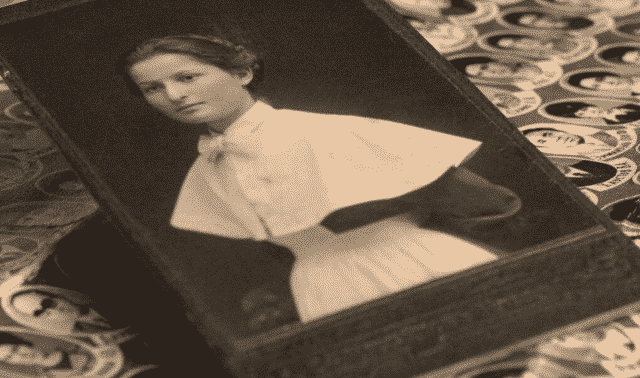If your family owned an automobile in the late 19th to early 20th century, then you might have a picture of relatives sitting in it. Americans’ obsession with cars grew rapidly. In 1900, there were only 10,000 automobiles in the United States; that number grew to half a million by 1910. In 1908, approximately 240 car manufacturers in this country offered our ancestors a wide variety of makes and models. I learned all these interesting facts from the Antique Automobile Club of America (AACA) Web site while I tried to interpret this photo submitted by Charles Monroe.
The image lacks significant costume clues, so I had to rely on the car to date it. I began my research by consulting About.com’s Automobile History and comparing the car in this photo to those pictured in The Complete Encyclopedia of Motorcars edited by G.N. Georgano. (Although that book’s out of print, I was able to borrow a copy from my public library.) As I examined this image, I created a checklist of design details:
- The spare tire hangs outside the driver’s seat.
- The headlights look like lanterns extending from the dashboard.
- There’s a large horn behind the spare tire.
- The car has a long steering column.
- It’s a convertible with a tarp that can be folded down in good weather.
- The car has either two seats or three.
- The driver’s section has a window. This is a significant detail because many cars didn’t have this extra feature.
- There’s no front windshield. A tarp extends from the roof of the car to protect the driver from the elements.
- The bottom of the passenger’s door is curved, rather than square.
Whenever I found a model in the Georgano book that appeared similar to this one, I ran a Google image search to look for other cars by that manufacturer. In spite of all this research, I still couldn’t locate an exact match to the car depicted here. That could be due to customization. For instance, Ford Model T cars were sold without tires, fenders, tops, windshields and lights. All those pieces had to be special ordered.
Frustrated, I retraced my steps and re-read the timeline on the AACA site. I knew that most of the cars resembling this one dated after 1905, so I concentrated on that part of the chronology. I learned that after 1908, automobiles began to look more like today’s cars. Early vehicles resembled modified horse-drawn carriages, which earned them the nickname “horseless carriage.” This information, combined with the photographic evidence, dates Monroe’s automobile to between 1908 and 1912. In that four-year period, many auto manufacturers began changing the design of headlights, windshields and dashboards.
A couple of questions still remain, though:
-
How old is the photograph? Although the car dates from 1908 to 1912, that doesn’t mean the picture was taken then. It’s possible, but there isn’t enough evidence to draw that conclusion.
-
What model and make is the car? Consulting with a museum professional or antique-car expert might supply the answer. I think the car’s an early limousine, driven by a chauffeur.
This is one of those photo mysteries I’ll keep researching because I know someone’s bound to have the answer to the second question. I’ll let you know if I discover any new information.



